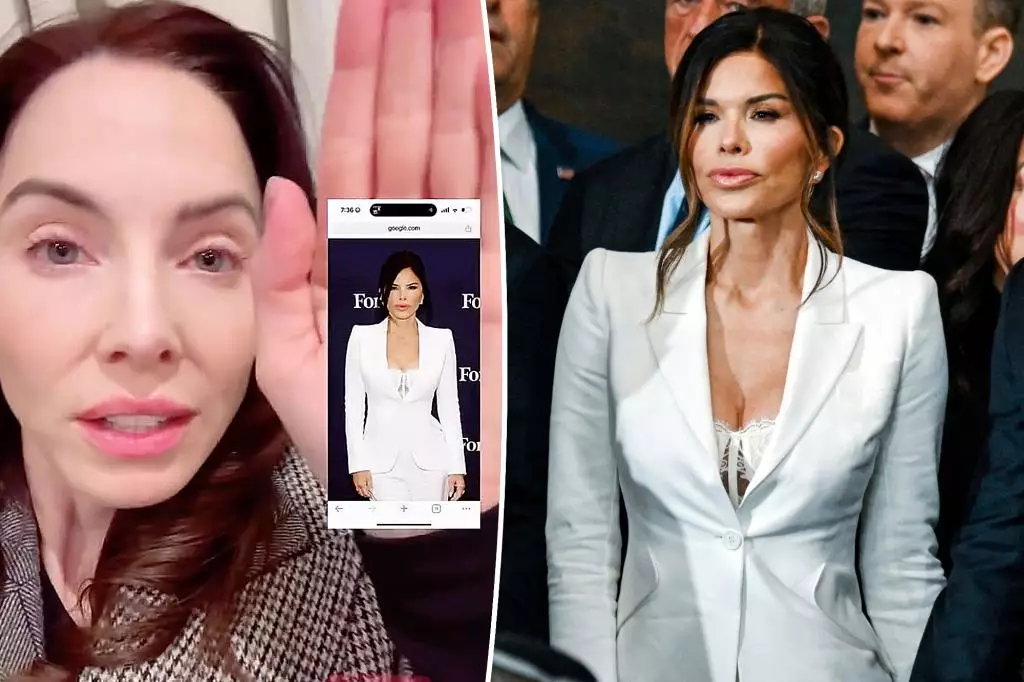The world of celebrity fashion is often the battleground for sharply divided opinions, and the recent inaugural appearance of Lauren Sánchez serves as a prime example. Her choice to don a striking white Alexander McQueen pantsuit paired with a peekaboo lace bra during Donald Trump’s inauguration sparked a flurry of commentary, particularly from comedian Whitney Cummings. However, this moment transcends mere fashion critique; it opens up a dialogue about societal expectations and personal expression in the public eye.
A revered figure like Sánchez, engaged to Jeff Bezos, clearly has access to top fashion choices and, likely, guidance from leading stylists. Yet, her ensemble raised eyebrows, igniting discussions around appropriateness and the ‘white lace’ effect. Cummings, in her Instagram post, discerned the perceived clash of style and circumstance, suggesting that while she may have found the ensemble lacking, she did not entirely blame Sánchez. Instead, she humorously pointed fingers at the fabric itself, highlighting a common issue many face: the discrepancy between an outfit’s appearance in a mirror compared to how it translates in photographs.
Social Media’s Role in Fashion Discourse
Social media acts as both a sounding board and a magnifying glass for public figures, amplifying voices both supportive and critical. Sánchez certainly felt the weight of online commentary, ranging from Cummings’ light-hearted ribbing to more severe critiques labeling her attire as inappropriate. Yet, the manner in which she engaged with her audience could be seen as an exercise in resilience. By responding to the criticism with a heart emoji, she acknowledged the commentary without directly engaging in feud-like exchanges. It reflects a practical understanding of how to navigate public life amidst scrutiny and inconsistent opinions.
However, what becomes evident through this spectacle is the differing standards applied to women versus their male counterparts in the same sphere. While Sánchez faced pointed critiques, figures like Mark Zuckerberg found amusement and interest in her presence—demonstrating a complex gender dynamic in which women’s fashion choices are meticulously dissected, oftentimes in ways that men’s choices are not.
Repercussions of Public Fashion Choices
The reactions to Sánchez’s attire highlight a broader question: how much power does fashion hold in shaping perceptions? The interplay of personal image and public opinion can be utterly transformative, both for the individual and their career. For Sánchez, a former news anchor turned high-profile public figure, her fashion decisions reverberate beyond the surface, influencing how she is perceived in the spheres of business and media.
Ultimately, the emphasis placed on what one wears to significant events, especially as a woman in a consequential relationship, speaks volumes about our collective consciousness around dress codes, expectations, and gender politics. Each outfit becomes a narrative—a representation of values, societal norms, and the struggle for autonomy within framed expectations. The dialogue spurred by Sánchez’s look at the inauguration guides us to reflect on our judgments and the broader implications of how we view women in positions of power. Perhaps we should focus less on the lace and more on the individual poised to wear it.

